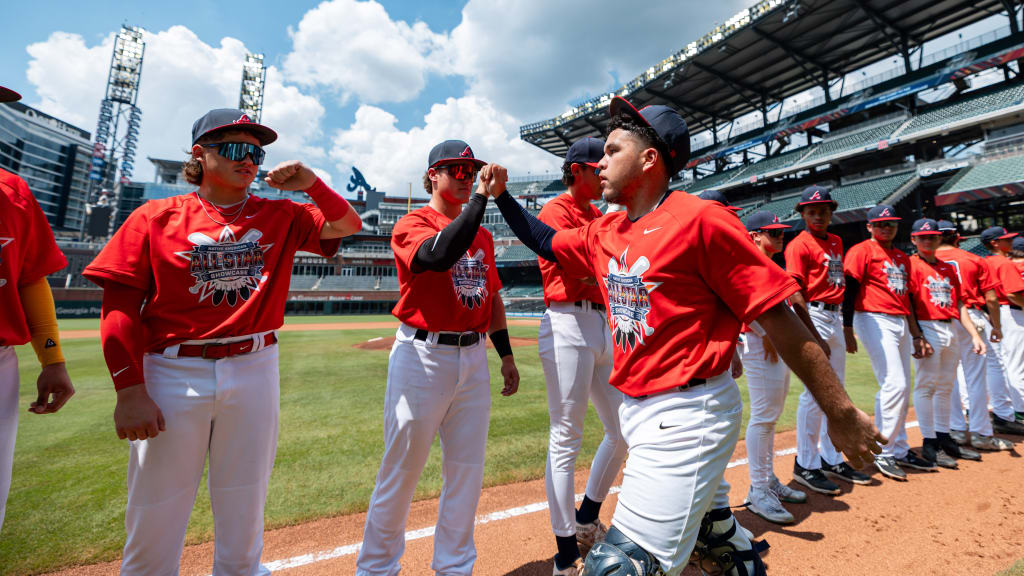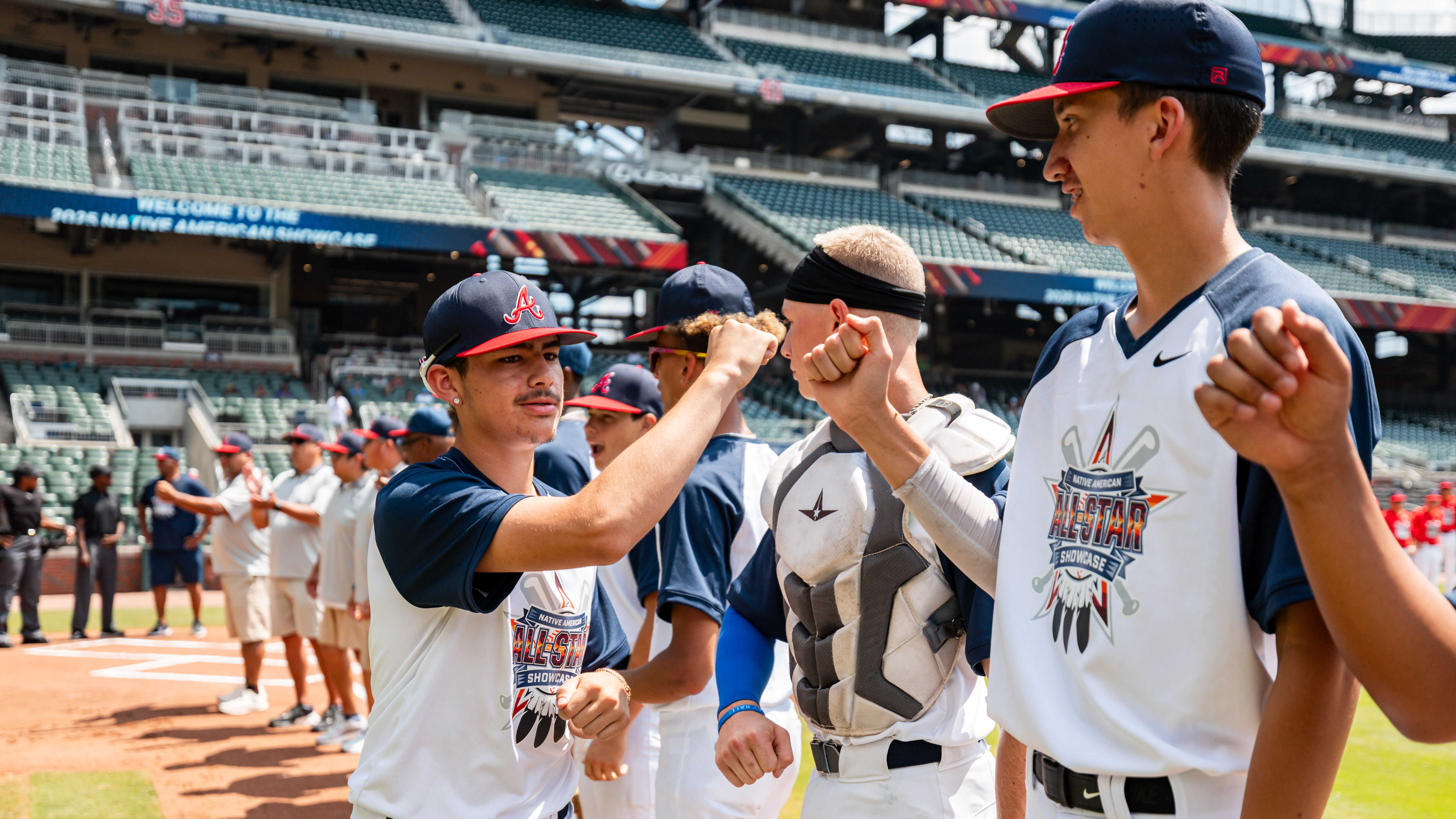
ATLANTA -- The Braves hosted their fourth annual Native American All-Star Showcase last Saturday and Sunday at Truist Park, and the showcase has evolved immensely since its inception.
The showcase, which featured 50 high school baseball players of Native American descent who aspire to play baseball at the next level, included a pro-style workout on Saturday and an exhibition showcase game on Sunday.
The players and coaches represented 31 tribes from across 22 states and Canada, and they worked closely with Braves alumni (who coached the teams) such as Jerome Walton, Johnny Estrada, Julio Franco, Pete Smith and Terry Harper.
Another former Brave -- Greg McMichael, Braves senior director of alumni relations and growing the game -- has been instrumental in the showcase since its inception.
“It gets better every year,” McMichael said. “We’ve seen an uptick in talent. We’re continuing to try to refine ways to get the word out. We’ve done some media with some of our tribal affiliates, and I think it’s important for us to continue to spread the word. We’re seeing the value in it.”
In 2024, 10 mentor Native American coaches participated in an hour-long question-and-answer session with McMichael, former Brave Collin McHugh, former Emory University head coach Mike Twardoski and Braves scout Alan Butts.

This season, the players were not only involved in off-the-field learning, they were also in Atlanta on Thursday (earlier than prior years), were recognized on the field prior to the Braves’ series finale against the Mets and attended the game.
“We took it to another step,” McMichael said. “We did a lot of breakout sessions, specifically with our Native American mentors/coaches. We did that at the hotel. [The players and coaches came to Atlanta] earlier this year. They were here for [Thursday’s game against the Mets], and we recognized them on the field. They were out there for the national anthem [and] for the first pitch. We got to recognize them in front of all of our fans, which was really cool. It was great for them to experience that. We haven’t been able to do that before.”
The Braves are attempting to get other MLB organizations involved in order to further grow the showcase in the future. They've reached out to four teams so far.
“[There are] no takers yet, but we are [going to] continue to knock on their [doors] and say 'Listen, there’s no reason in the world you shouldn’t be doing this. This is a great thing. Partner with us on it,'” McMichael said.

Michael Stopp, the executive director for the Native American Athletic Foundation who works on the Atlanta Braves Native Working Group, is a liaison for Native American representation across multiple sports.
“Over the past four years, we’ve learned a lot about the way to do this,” Stopp said. “It’s become so much smoother. One of the best things about it is that we’re a known [entity] in Indian Country now. Before we made the announcement [about the showcase], I had parents reaching out to me on Facebook [or] going to our website and asking questions. It’s gotten to the point where this is expected, because the Braves have been so faithful. Every year there’s been a bit of a change.”
For the Braves and the Native American Athletic Foundation, one goal is to use the showcase as a way to help selected players make it to the next level while also honing in on their off-the-field qualities.
“The overall operations are much smoother, but this year we added another day for programming,” Stopp said. “The Native American Athletic Foundation uses sports to help develop our players into a whole person, not just [as athletes]. This year, we added an extra day where we worked with a mental health professional and the coaches about what it’s like to move on from high school and into college. We also talked about what recruiters are looking for.”
Davonte Ross, an outfielder who is from South Dakota’s Lakota Tech High School and is affiliated with the Oglala Lakota Sioux Tribe, walked and singled out of the cleanup spot in the showcase game Sunday.
“I [wanted to] go,” Ross said when he found out about being selected for the showcase. “There’s nothing more to it. I wanted to go and be known as one of the top 50 Native American players in the United States. I couldn’t be here without my family. I just wanted to come here and dedicate it to them.”